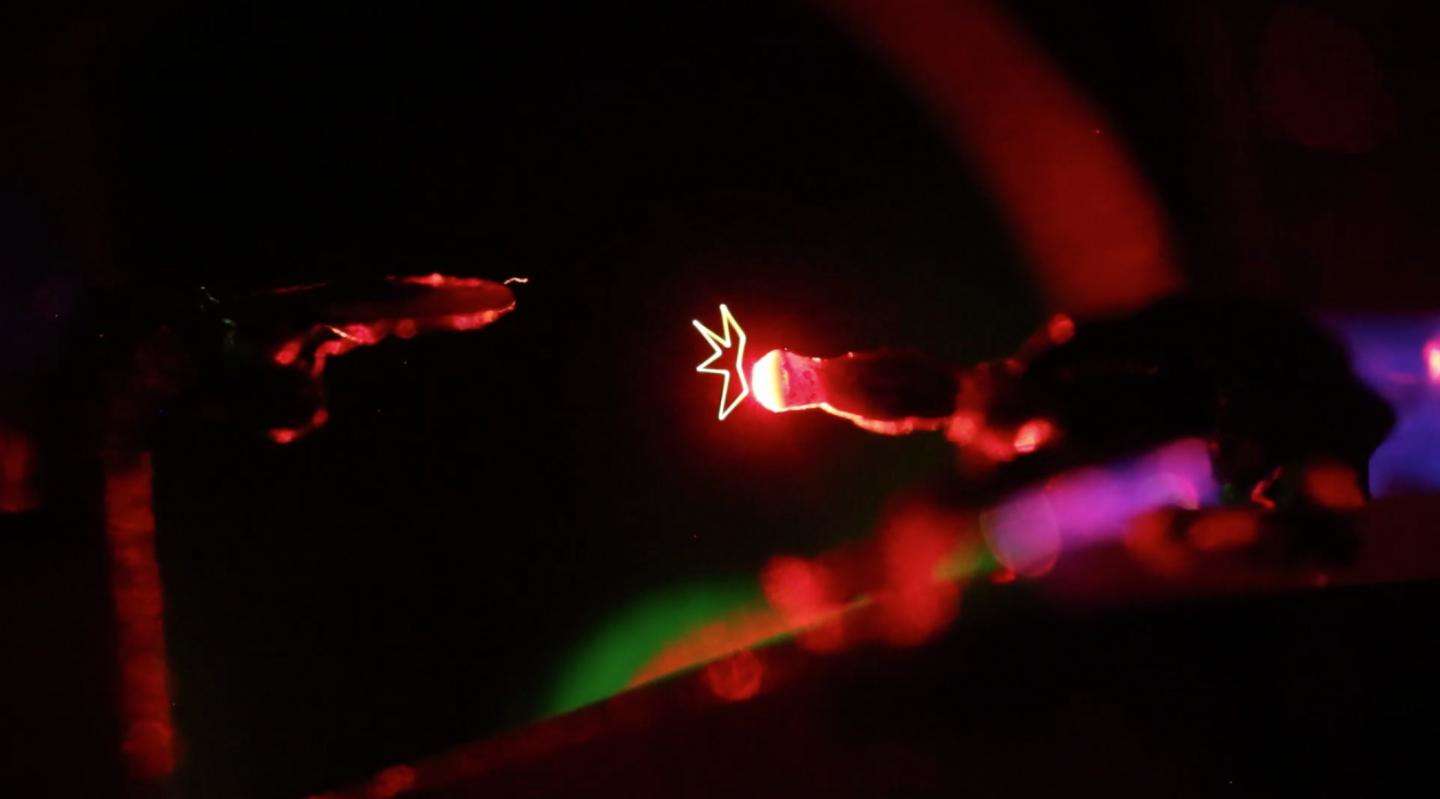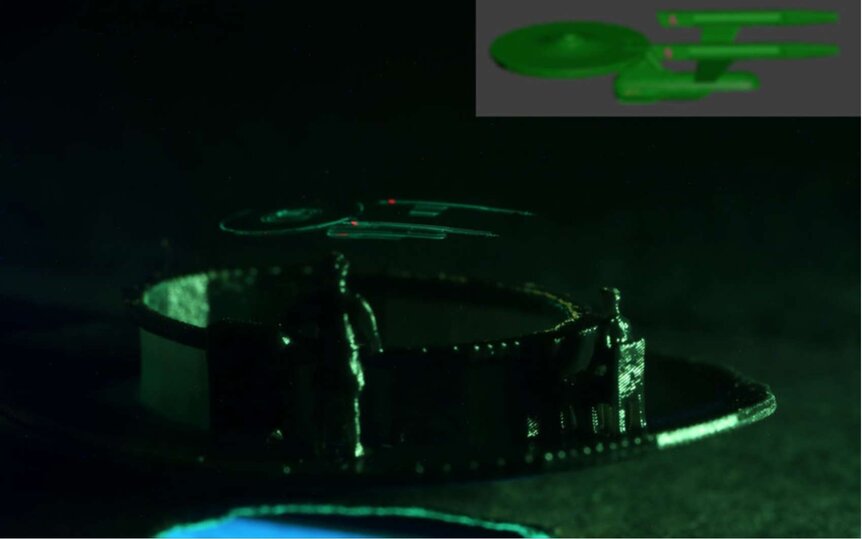Create a free profile to get unlimited access to exclusive videos, sweepstakes, and more!
Star Trek-loving scientists create hologram special effects from thin air

Inspired by iconic spaceship battle scenes and lightsaber duels from Star Trek and Star Wars, a revolutionary new type of holographic laser projection has been experimented with by a team of laser scientists at Brigham Young University and the results are truly out of this world.
BYU's Holography Group has created these free-floating 3D holograms that employ lasers and a tiny particle hovering in mid-air to manifest these amazing digital images that can can be viewed from all angles without the need of a special AR headset or smartphone.
By using a laser beam to trap a small particle in mid-air, the team then tasks the concentrated shaft of light to drag that particle in various directions at high speed, thus manifesting vivid holographic animation that exists physically.
BYU's sci-fi loving crew has even crafted micro versions of Star Trek's USS Enterprise and a Klingon Battle Cruiser, as well as tiny renditions of a light saber-wielding Yoda and Darth Vader to demonstrate the technology in their official video above.
"What you're seeing in the scenes we create is real; there is nothing computer generated about them," said lead researcher Dan Smalley, a professor of electrical engineering at BYU. "This is not like the movies, where the lightsabers or the photon torpedoes never really existed in physical space. These are real, and if you look at them from any angle, you will see them existing in that space."
Fueled by a National Science Foundation CAREER grant, this new endeavor is based off of a BYU project from 2018 where they conjured up a hologram device called the Optical Trap Display (OTD) which produced tiny 3D holograms.
Smalley and his crew then spent three more years improving their OTD technology to include real animation, opening the door to the prospect of advanced virtual holograms that truly interact with viewers in real-time space.
"Most 3D displays require you to look at a screen, but our technology allows us to create images floating in space -- and they're physical; not some mirage," Smalley said. "This technology can make it possible to create vibrant animated content that orbits around or crawls on or explodes out of everyday physical objects."
In this new study published in Nature Scientific Reports this month, Smalley and BYU graduate student Wesley Rogers presented their geeky breakthroughs that might represent remarkable improvements in the light-based technology.
This pioneering work overcomes certain limiting elements to optical trap displays and their inability to create virtual images. However, Smalley and Rogers do demonstrate that it's possible to replicate virtual images by harnessing a time-varying perspective projection backdrop.
"We can play some fancy tricks with motion parallax and we can make the display look a lot bigger than it physically is," Rogers added. "This methodology would allow us to create the illusion of a much deeper display up to theoretically an infinite size display."
















